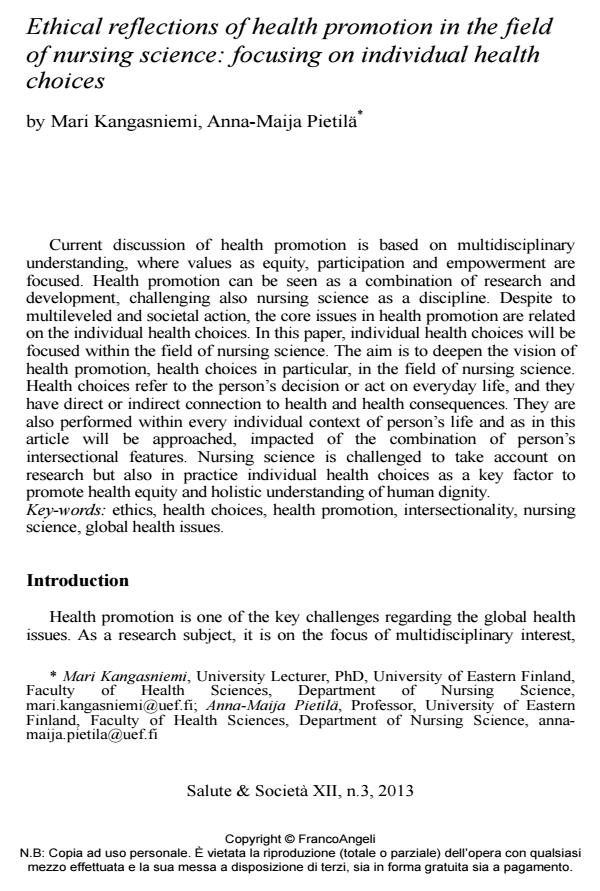Ethical reflections of health promotion in the field of nursing science: focusing on individual health choices
Titolo Rivista SALUTE E SOCIETÀ
Autori/Curatori Mari Kangasniemi, Anna-Maija Pietila
Anno di pubblicazione 2014 Fascicolo 2013/3En
Lingua Inglese Numero pagine 18 P. 82-99 Dimensione file 654 KB
DOI
Il DOI è il codice a barre della proprietà intellettuale: per saperne di più
clicca qui
Qui sotto puoi vedere in anteprima la prima pagina di questo articolo.
Se questo articolo ti interessa, lo puoi acquistare (e scaricare in formato pdf) seguendo le facili indicazioni per acquistare il download credit. Acquista Download Credits per scaricare questo Articolo in formato PDF

FrancoAngeli è membro della Publishers International Linking Association, Inc (PILA)associazione indipendente e non profit per facilitare (attraverso i servizi tecnologici implementati da CrossRef.org) l’accesso degli studiosi ai contenuti digitali nelle pubblicazioni professionali e scientifiche
Current discussion of health promotion is based on multidisciplinary understanding, where values as equity, participation and empowerment are focused. Health promotion can be seen as a combination of research and development, challenging also nursing science as a discipline. Despite to multileveled and societal action, the core issues in health promotion are related on the individual health choices. In this paper, individual health choices will be focused within the field of nursing science. The aim is to deepen the vision of health promotion, health choices in particular, in the field of nursing science. Health choices refer to the person’s decision or act on everyday life, and they have direct or indirect connection to health and health consequences. They are also performed within every individual context of person’s life and as in this article will be approached, impacted of the combination of person’s intersectional features. Nursing science is challenged to take account on research but also in practice individual health choices as a key factor to promote health equity and holistic understanding of human dignity.
Parole chiave:Ethics, health choices, health promotion, intersectionality, nursing science, global health issues.
Mari Kangasniemi, Anna-Maija Pietila, Ethical reflections of health promotion in the field of nursing science: focusing on individual health choices in "SALUTE E SOCIETÀ" 3En/2013, pp 82-99, DOI: